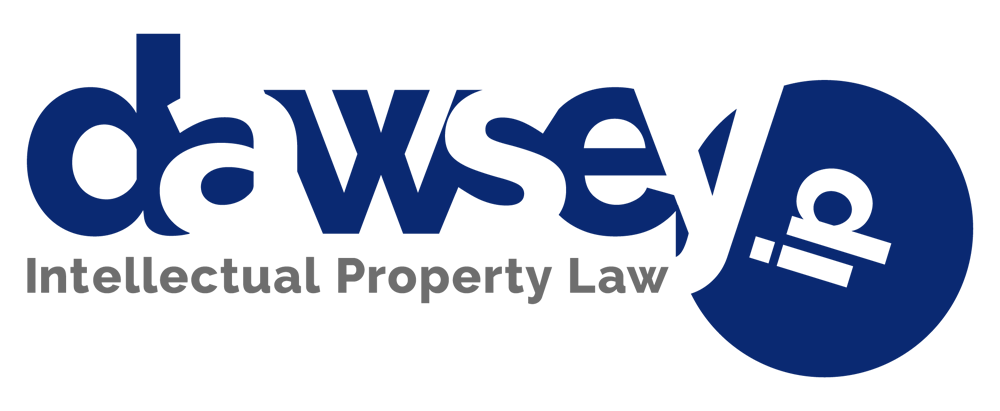
A Lesson in Claims “Grammar” from the CAFC
© 2003, Dawsey Co., LPA
July 2003
In this month’s decision in Abbot Laboratories v. Baxter pharmaceuticals, the Court of Appeals for the Federal Circuit provided an interesting comparison and review of some common patent claim terminology, as well as an important reminder of some claiming pitfalls
An “Effective” Amount
The case involved an attempt by Baxter to pursue an Abbreviated New Drug Application (ANDA) by showing that its proposed manufacture of a generic compound did not infringe Abbot’s U.S. Patent No. 5,990,176 for sevoflurane, a halogenated anesthetic used in general anesthesia. The primary issue in controversy in this case was Abbot’s claim to inclusion of an “effective” amount of a Lewis acid inhibitor to the drug to extend shelf life (chemically, a Lewis acid is an electron pair acceptor in a chemical reaction). Without the additive, Abbot had found that Lewis acids attacked sevoflurane and created highly corrosive hydrofluoric acid, which is corrosive to skin and mucous membranes, even in small amounts.
Baxter contended that a sale prior to the patent, by Abbot, of sevoflurane with 131 ppm of inhibitor, coupled with a specification in the patent that the amount of inhibitor that “can be used” or “is believed to be” needed was above 150 ppm, sufficed to make Baxter’s product, which contained no more than 130 ppm, non-infringing. The District court agreed.
However, the CAFC took a broader interpretation of the term “effective amount.” Noting that the traditional definition of a claim to an “effective amount” meant “a sufficient amount of the specified component to … have the specified properties under the specified conditions,” the court dipped deeply into the chemistry of sevoflurane. The court found that the specification clearly showed that the amount of Lewis acid inhibitor required varied depending on multiple variables, including the storage temperature and conditions of the drug. Because Abbot had never, in the specification or during prosecution of the patent, explicitly stated a minimum level of inhibitor that would be effective, the court declined to read such a limitation into the Abbot’s past sales or disclosure.
This reasoning reinforces the need to be very cautious when placing upper or lower limits in chemical patent applications. There was at least some evidence that Abbot did not believe that very low amounts of inhibitors would be sufficient to protect the drug. However, by avoiding an explicit statement of a lower end limit, Abbot preserved its flexibility in claiming an “effective amount” of the chemicals.
“A” and “an” in Open Ended Claims
Next, citing its own 2000 decision in KCJ Corp. v. Kinetic Concepts, Inc., the Court pointed out that the indefinite article “a” or “an” carries the meaning of “one or more” in open-ended claims containing the transitional phrase “comprising.” Accordingly, what may appear to be a limitation is not so, in such open-ended claims. However, the court immediately rejected extension of this doctrine to Markush claims.
Markush Claims are Special
The Lewis acid inhibitors in the Abbot case were claimed as a Markush group, that is, claimed as alternatives along the following model, “a [Lewis acid inhibitor] … selected from the group consisting of … and ….” Abbot argued that the use of the article “a” in this language, following the open-ended claims doctrine discussed above, entitled them to a construction wherein combination of more than one of the list of Markush elements were covered by the claim. The court rejected this argument.
The court held that Markush groups are listings of specified alternatives from a group in a patent claim, typically expressed in the form; “A member elected from the group consisting of A, B, and C,” although they noted that language such as “wherein the member is A, B, or C” would also be correct.
However, a Markush group by its nature and use of the term “is” or “consisting of,” is a closed claim, and that precedent extending back at least 35 years requires that members of a Markush group are alternatively, and not collectively, usable. Use of the article “a” with the language “consisting of” takes away the potential plural definition of “a” from open-ended claims language doctrine, and replaces it with the much narrower definition of being “one of the group of specified alternatives.” If a patentee desired to include mixtures or combinations of the members of a Markush group, it would be necessary to add qualifying language while drafting the claim. The court offered examples of such qualifying language as “and mixtures thereof” and “at least one member of the group,” and noted that without such qualifying language, a patentee does not claim anything other than the plain reading of the closed claim language, unless it expressly indicates the selection of multiple members of a Markush grouping. Because Abbot’s claims did not add this qualifying language, the claims were held to be limited to a single member selected from the recited Markush group.
Acceptable standards in claims language change only very slowly over time. Patent applicants and their attorneys need to hold fast to old rules, until the courts clearly decide otherwise, to make sure that they are saying what they really mean.
